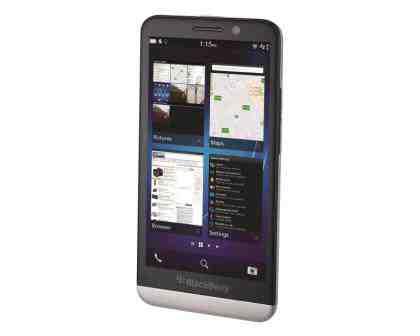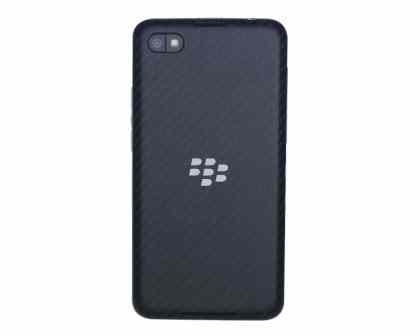BlackBerry might not be in a very good place right now, but that hasn't stopped the struggling manufacturer from launching a new flagship smartphone. The 5in Z30 is the largest BlackBerry handset yet, dwarfing the 4.2in Z10. The Z30 also runs version 10.2 of the BlackBerry operating system and has a striking design that's befits a high-end device.

The Z30 borrows several design cues from the Q10 but eschews the physical QWERTY keyboard. Built from a mixture of glass, aluminium and carbon fibre weave, it feels much more robust than the plastic Z10 and, more importantly, more like a premium device. There's very little give or flex in the rear panel, despite it being removable. However, at 170g it's a fairly heavy.

The 5in display dominates the front of the handset, and it produces incredibly vibrant colours and excellent viewing angles thanks to its AMOLED panel. In isolation, it's a very good looking screen, even if its 295ppi pixel density is somewhat lower than that of the Z10, which had a 356ppi display. However, the 1,280x720 resolution isn't going to set pulses racing when you sit it side-by-side with the Full HD Samsung Galaxy S4 and HTC One.

With the front almost entirely taken up by the screen, all the physical buttons and ports are found around the Z30’s sides. Micro USB and Micro HDMI ports are on the left, the 3.5mm audio jack is up top next to the power button and the volume keys are on the right. There's also a dedicated voice button sandwiched between the volume keys, which activates BlackBerry's simple voice control system. It's not on par with Google Voice or Apple's Siri, but some may find it useful for quickly looking up directions or setting reminders.
Z30 CAMERA
The 8-megapixel rear camera doesn't seem to have changed significantly from the Z10. It has the same f/2.2 aperture lens, 1080p video recording and BlackBerry's Time Shift camera preset that captures multiple images at once. Time Shift lets you roll back certain parts of the shot in case someone was blinking or looked the other way while you were taking a picture. You also get an LED flash, which will help with low-light shooting.
Our test shots show that although the Z30 can capture colours accurately in well-lit and partially lit scenes, it struggles when it comes to autofocus. Tap-to-focus is useful, but we found that tapping again would refocus the image. Thankfully you can use the volume buttons to trigger the shutter instead, which should result in clearer, sharper images. We also noticed that darker parts of the image were crushed in well-lit scenes, whereas brighter whites were overexposed in low light.
With a dual-core Snapdragon S4 Pro CPU running at 1.7GHz and 2GB of RAM inside, the Z30 is a fairly powerful handset that runs BlackBerry's unique BB10 operating system smoothly. On paper it should match Google's Nexus 4 in terms of raw performance, but for web browsing the Z30 is actually much quicker. With an overall score of 991.6ms in the SunSpider JavaScript benchmark, it outpaces many of the fastest Android smartphones. However, synchronising multiple accounts and powering a 5in display takes its toll on the battery. The Z30 only lasted 10 hours and 47 minutes in our video rundown test, putting it several hours behind the latest flagship Android handsets.
We didn't experience any jerkiness or slowdowns with the Z30 during general use, unlike with the Z10, which suggests the combination of faster hardware and improved software has made a big difference.











